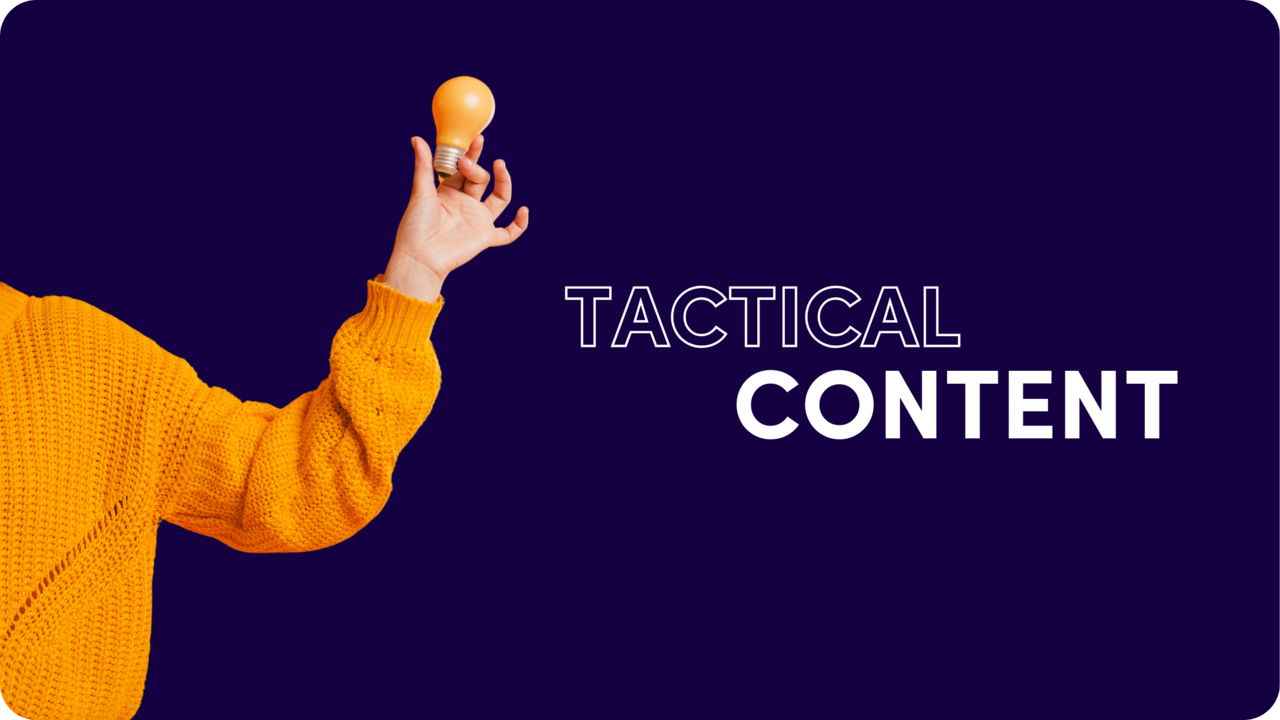Beyond Blogs: How to Use Content Distribution to Increase Online Engagement

Ever wondered how much content is on the internet?
Too much to count. Look at it this way: six new websites, 116 new blog posts, and 500 minutes of YouTube video are published on the web every second.
That’s just the tip of the iceberg.
Given all the noise in the content marketing space, even high-quality content runs the risk of getting lost in the crowd. One of the ways to mitigate that risk is content distribution.
What is content distribution?
Content distribution refers to the process of disseminating content to your target audience via a variety of channels, including owned media, earned media, and paid media. Effective content distribution helps to increase brand awareness, generate leads and sales, and establish a strong online presence.
Success lies in achieving the right distribution mix for your content and audience. Which media channels should you focus on to enhance your digital presence? What types of content are ideal for distribution and on which channels? This guide covers all that and more. So let’s dive into content distribution.
TL;DR highlights:
- In a content-saturated internet, successful content distribution is vital for increasing brand awareness, generating leads, and establishing a robust online presence.
- The main content distribution channels include owned channels (controlled by the business), earned channels (external sharing and promotion), and paid channels (advertising and sponsorship).
- Owned channels offer control but limited reach, earned channels provide wider reach but less control, and paid channels offer immediate results but require a budget.
- Maximizing owned channels, such as websites, blogs, and social media, involves creating mobile-friendly, SEO-optimized, and visually engaging content with clear calls-to-action.
- Success in content distribution is measured through metrics like website traffic, social media engagement, conversion rates, cost per acquisition, and attention metrics. Continuous tracking and optimization of content is key.
Understanding Content Distribution Channels
Content distribution involves disseminating digital content through three different media channels: owned, earned, and paid. Each channel has unique characteristics and offers specific advantages and disadvantages for marketers.
Owned channels
Owned channels are online platforms and assets that businesses own or control, such as websites, social media pages, and blogs. With owned channels, businesses have complete control over content creation and distribution. However, the reach of owned channels is limited to existing followers and subscribers. Examples of content types typically used for owned channels include blog posts, ebooks, and case studies.
Earned channels
Earned channels involve the sharing and promotion of content by external sources, such as social media users, backlinks, and media coverage. Unlike owned channels, businesses do not have complete control over distribution on earned channels. However, earned channels offer the potential for increased or even viral reach and can serve as a validation of the quality and authority of the content. The key content type for earned channels is shareable content that encourages engagement, such as videos, thought leadership, and testimonials.
Paid channels
Paid channels involve the promotion of content through paid advertising and sponsored content. Paid channels offer immediate and measurable results in terms of reach and engagement. However, they require a dedicated budget and are best suited for short-term gains, rather than building exposure and reach for the long term. The key content type for paid channels is targeted and eye-catching content that encourages clicks and conversions.
Content Distribution Channels: Pros and Cons
| Channel Type | Advantages | Disadvantages |
| Owned | Complete control over content creation and distribution | Reach is limited to existing followers and subscribers |
| Earned | Expanded reach and building authority | No control over distribution and lower predictability of results |
| Paid | Immediate and measurable results in terms of reach and engagement | Requires a budget and can be less effective in generating organic reach |
Understanding the advantages and disadvantages of each content distribution channel is crucial for designing an effective and impactful content distribution strategy. The type of content, budget, and target audience should all be taken into account when choosing the most suitable channel for promoting content.

How Does Content Distribution Work?
Before jumping into the mechanics of content distribution, it is essential to understand the importance of a well-planned content strategy. Developing a clear content strategy will help businesses identify their target audience, create content that speaks directly to them, and establish goals for distribution.
Once the content strategy is in place, businesses can move on to promoting their content through owned, earned, and paid channels. Let’s take a look at how content is distributed via each channel:
- Owned channels: Owned channels are the logical starting point for distributing content. You can create, distribute, and test a range of content at your own pace, focusing on your target audience and customers. Content can be published on the company website, blog, social media pages, or distributed via email to customer or prospect lists.
- Earned channels: Earned channels are more challenging to acquire, as you will need to reach out to third-party entities and convince them to share your content on their platforms. Examples of earned channels include social media shares, backlinks, media coverage, and influencer collaborations. Earned media requires you to build relationships with external partners, which takes time and effort. However, earned media distribution is very valuable, as it helps businesses tap into a wider audience and boost online presence and credibility.
- Paid channels: These channels involve directly paying for content promotion or advertising, such as social media ads, sponsored content, Pay-Per-Click (PPC) ads, or native ads, such as Outbrain. The “trick” to a successful paid content distribution strategy is careful planning, budgeting, tracking, and optimization to avoid overspending and targeting the wrong audience.
Content syndication
In addition to the three channels mentioned above, businesses can also make use of content syndication to increase reach and visibility. Content syndication is a different form of earned media distribution, in which existing content is re-published on third-party websites or platforms. This can be a good strategy to reach new audiences and improve search engine rankings.
Content Types for Distribution
When it comes to content distribution, diversifying content formats is key. Businesses can distribute a range of content types, from articles to videos, and interactive content, such as polls or quizzes. Common types of content include:
Each type of content has unique advantages and can help to engage different audiences. For instance, visual content like infographics and videos may be more effective in grabbing the attention of social media users, whereas thought leadership articles and case studies are ideal for B2B audiences.

Owned Channels: Maximizing Your Online Assets for Content Distribution
Owned content channels can provide businesses with a powerful means to reach their target audience. By optimizing content for online distribution, companies can greatly increase their reach and engagement through effective use of the owned channels at their disposal. But what are the best strategies for leveraging these channels?
Owned channels for online distribution
- Websites: Business websites serve as the primary point of contact between the business and its online audience, making them a highly effective owned channel for disseminating content. By regularly posting case studies, landing pages, and other content on their website, businesses can increase traffic and engagement.
- Blogs: Related to websites, blogs provide businesses with an easy-to-update platform for publishing content and creating discussions with their audience. This allows businesses to build rapport with their audience and provide valuable insights into their niche.
- Social media platforms: Social media profiles on Facebook, X, LinkedIn, Instagram, and TikTok offer a powerful means for businesses to engage with their audience, share content, and increase brand awareness.
Optimizing content for online distribution on owned media channels
Simply creating high-quality content is not enough to effectively engage an audience. Businesses must also optimize their content for distribution by:
- Ensuring content is mobile-friendly and responsive
- Creating eye-catching and attention-grabbing headlines
- Using keywords and phrases to improve SEO ranking and visibility
- Optimizing images and videos for faster loading times
- Encouraging social media sharing and commenting
Earned Channels for Content Distribution: Increase Your Exposure on Other Sites
In the world of content distribution, earned channels can be powerful tools for businesses looking to generate organic reach and increase engagement. Earned channels include social media shares, backlinks from other websites, and media coverage, among others. With the right techniques, businesses can leverage these channels to encourage content sharing and ultimately grow their digital presence.
Encouraging content sharing
One effective way to encourage content sharing is to create high-quality, valuable content that is shareable and engaging. This can include blog posts, videos, infographics, or other forms of content that provide real value to the target audience. Additionally, businesses can incentivize content sharing by offering exclusive discounts or other rewards for those who share the content on social media or other channels.
Building backlinks
Backlinks from other reputable websites can also help to increase organic reach and drive traffic to a business’s website. One way to build backlinks is to create guest posts or other forms of content for other websites in the same industry. This not only generates backlinks but also helps to establish the business as a thought leader in the industry.
Maximizing media coverage
Media coverage can be a highly effective earned channel for content distribution. By developing strong relationships with journalists and media outlets in the industry, businesses can increase their chances of being featured in news articles or other publications. This can help to increase brand recognition and drive traffic to the business’s website.
Popular content types for earned channel distribution
- Blog posts: Long-form or short-form written content that provides value and engages the target audience.
- Videos: Visual content that can provide information or entertainment to the target audience.
- Infographics: Visual content that presents complex information in an easy-to-understand format.
- Guest posts: Written content published on other websites in the industry to build backlinks and establish thought leadership.
- Media coverage: Press releases, news articles, and other forms of media coverage that can help to boost brand recognition.
Your website and social media platforms will not be enough to reach the potential broadest audience. That’s why earned channels are a critical component of content distribution. Earned media requires effort and outreach, but can significantly expand your digital presence and exposure.
Paid Channels: Pay to Get Your Content Seen
Beyond owned and earned channels, paid content distribution can effectively amplify your reach and drive more traffic to your website in a relatively short time frame. Through targeted social media advertising, native advertising, and sponsored content, your business can ‘pay’ to target high-potential audiences, gain more exposure, and generate leads.
Social media advertising
Social media platforms like Facebook, X, TikTok, and LinkedIn offer powerful advertising options that allow businesses to target specific audiences based on demographics and interests. When creating your ad campaigns, it’s important to use eye-catching visuals, persuasive copy, and targeted CTAs to drive conversions.
| Paid Social Media Networks | Best Use |
| Facebook Ads | Targeting a wide range of demographics, both B2C and some B2B |
| X Ads | Targeting tech-savvy audiences |
| LinkedIn Ads | Targeting B2B professionals |
| TikTok Ads | Targeting younger demographics |
Native advertising
Native ads blend in naturally with the platform on which they appear, so they tend to perform better than display ads. Rather than looking like a traditional ad, native ads align more comfortably with the user experience and the tone of the platform, so they are less disruptive. Native ads can be especially effective for promoting blog posts, whitepapers, and other content types because the wide range of targeting options means you can focus the right content on the right audience segment. This is crucial to attracting attention and building audience engagement.
Sponsored content
Sponsored content involves paying for the placement of your content on third-party websites or other owned media. This can include sponsored blog posts, sponsored content sections, and other opportunities for cross-promotion. Sponsored content can bring in referral traffic, generate leads, and establish your brand as a thought leader. For example, take a look at a thought leadership article by Outbrain, distributed on The Drum, tackling a hot topic in the digital marketing world: attention metrics.

When utilizing paid channels, it’s important to determine your budget, set realistic goals, and track your results. This will allow you to optimize your campaigns, continue with what works, and adjust your strategy as necessary. As you test various channels and tactics, you’ll discover what works best for your business and your target audience.
Measuring Content Distribution Success
Investing time and money into distributing content across various channels is worthwhile, but it’s essential to measure success to refine distribution strategies continually. Here are some key metrics to track:
- Website traffic: Monitor web analytics to measure the impact of published content on website traffic. It’s vital to review visitor behavior, engagement, and pages viewed to optimize future distribution strategies.
- Engagement metrics: Track social media engagement metrics like likes, shares, and comments on published content. Reviewing these metrics helps to assess the content’s effectiveness and adjust distribution strategies accordingly.
- Conversion Rate (CVR): Conversion rate measures people who take desired actions on your website, such as subscribing to email lists, making a purchase or downloading resources. Track conversion rate to determine if published content influences people’s actions.
- Cost Per Acquisition (CPA): CPA indicates how much a conversion costs. It’s calculated by dividing total marketing costs by the number of conversions. By reviewing this metric, businesses can determine the success of paid distribution channels and adjust strategies accordingly.
- Attention metrics: Measuring attention is a step more advanced than measuring simple viewability. New advances in adtech make it possible to monitor how much actual attention your ad or content is receiving from real users. Attention metrics is a growing field, so keep an eye out for opportunities to track attention on the platforms you use for content distribution.
5 Quick Tips for Successful Content Distribution
A key component for successful content distribution is creating great quality content from the outset. There is no point in distributing content that is boring, unoriginal, or doesn’t offer unique value to the audience. Good content will be more attractive to third-party platforms and publishers, and will naturally attract more earned media exposure. Here are the top 5 tips to improve the ROI of your content distribution investment:
1. Optimize for SEO
Optimize your content for search engines by incorporating relevant keywords, meta descriptions, and titles. This will ensure that your content is easily discoverable online, increasing its reach and visibility. A good SEO strategy is to focus on long-tail keywords. Long-tail keywords are more specific and less competitive, providing solid opportunities to improve your SEO rankings.
2. Collaborate with influencers
Partner with social media influencers and thought leaders in your industry to expand your reach and tap into new audiences. Influencers can share your content with their followers, increasing your brand’s exposure and credibility.
3. Leverage user-generated content
The most trusted content online is not “expert” opinions, brand-produced content, or influencer content, but rather content that is generated by users themselves. With so much information at their fingertips, many prefer content that is created by people just like them. UGC is seen as more “authentic” and is therefore more likely to engage readers. This is definitely a strategy you should incorporate in your content distribution efforts. Encourage customers to create and share their own content, such as product reviews or testimonials.
4. Experiment with different content types
The best approach to content distribution is to create a variety of content for a range of channels. Diversify! Keep your audience engaged and attract new followers with content such as blog posts, videos, podcasts, infographics, ebooks, thought leadership articles, case studies, whitepapers, social media posts, and more.
5. Consistently monitor and analyze performance
Checking the performance of content manually is only going to get you so far. Use tools like Google Analytics, HotJar, Crazy Egg, Moz, and Ahrefs, and Buffer and Sprout Social for social media analytics. These provide businesses with a clear understanding of the overall effectiveness of their content distribution strategy. Implement changes proactively by analyzing your content performance metrics regularly.
FAQ
What is content distribution?
Content distribution refers to the process of disseminating digital content to maximize its reach, engagement, and visibility. It involves promoting and sharing content through various channels, such as owned websites, social media platforms, and third-party syndication networks.
Why is content distribution important for businesses?
Content distribution is essential for businesses as it allows them to increase their online presence, attract and engage a larger audience, and drive traffic to their digital assets. Effective content distribution can also help businesses establish thought leadership, generate leads, and boost brand awareness.
What are the key strategies for effective content distribution?
The key strategies for effective content distribution include:
- developing a comprehensive content strategy
- promoting content through various channels
- leveraging content syndication networks
- optimizing content for search engines
- and measuring the success of distribution efforts through data analysis.
What are owned, earned, and paid channels in content distribution?
Owned channels refer to platforms and properties that businesses control, such as websites, blogs, and social media accounts. Earned channels are organic channels where others share or amplify your content, such as social media shares and backlinks. Paid channels involve paid promotion and advertising, such as native ads, sponsored content, and social media ads.
What are some popular types of content for distribution?
Popular types of content for distribution include blog posts, whitepapers, testimonials, ebooks, videos, podcasts, thought leadership articles, infographics, guides, and case studies. Diversifying content formats helps cater to different audience preferences and maximize engagement.
How can businesses optimize their owned channels for content distribution?
Businesses can optimize their owned channels for content distribution by implementing SEO best practices, creating engaging and shareable content, utilizing relevant social media platforms, and regularly updating their websites and blogs with fresh content. It’s also essential to have clear calls-to-action (CTAs) and user-friendly navigation.
How can businesses encourage content sharing and organic reach?
Businesses can encourage content sharing and organic reach by creating high-quality and shareable content, incorporating social sharing buttons on their websites and blogs, engaging with their audience on social media, collaborating with influencers and industry experts, and providing incentives or rewards for sharing content.
Are paid channels effective for content distribution?
Yes, paid channels can be effective for content distribution. Paid promotion on social media platforms, sponsored content on websites and blogs, and targeted PPC advertising can help businesses reach a broader audience and generate quick visibility and engagement. However, it’s crucial to implement proper targeting and optimization strategies for maximum ROI.
How can businesses measure the success of content distribution efforts?
Businesses can measure the success of content distribution efforts by tracking key metrics such as website traffic, time spent on page, bounce rate, social media engagement, backlinks, and conversions. Various analytics tools, including Google Analytics and social media insights, can provide valuable data for analyzing performance and optimizing future distribution strategies.
What are some tips for enhancing digital presence through content distribution?
Some tips for enhancing digital presence through content distribution include:
- Optimizing content for search engines
- Leveraging influencer collaborations
- Repurposing existing content into different formats
- Utilizing user-generated content
- Engaging with the audience through comments and social media
- Staying updated with current content marketing trends and best practices











